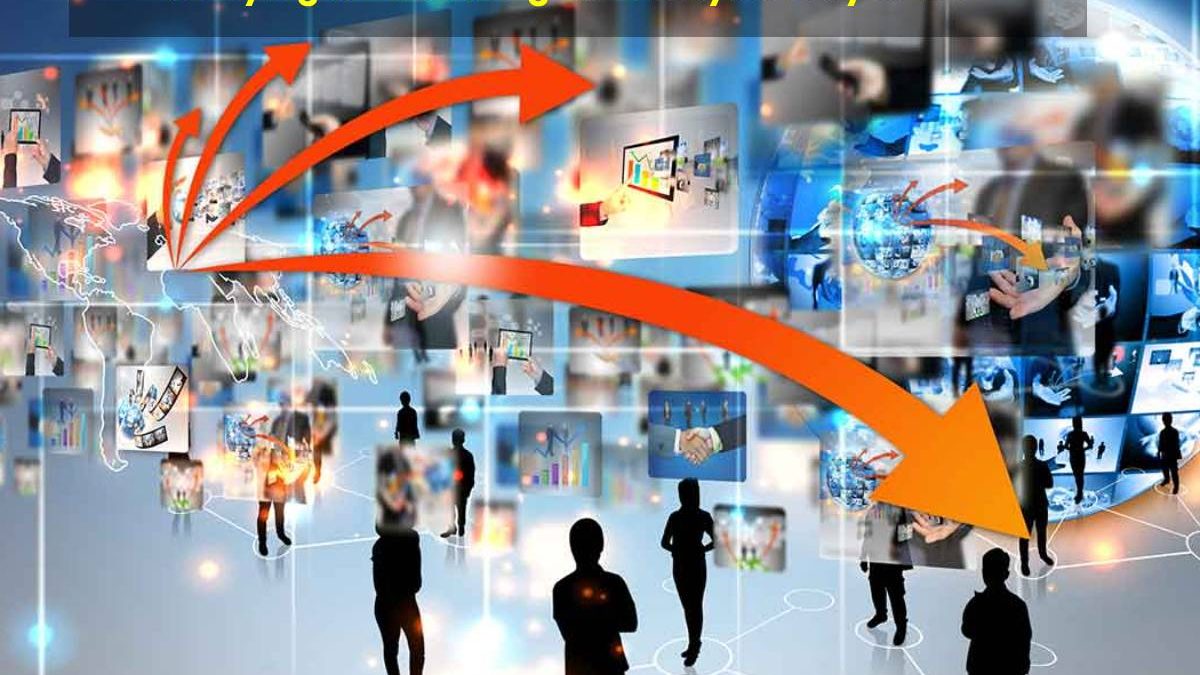Digital Lifestyles From internet shopping to virtual entertainment, individuals can make their own imaginative substance and post it on YouTube, Facebook or Blog, and so forth. They can execute or cover bills on their cell phones. Computerized banking for instance permits people and organizations to open a record, access installments, reserve funds and credit items while never venturing into a bank office. This is conceivable through digitization, which can basically transform a cell phone into a wallet, a bank office and, surprisingly, a library.
Advanced way of life makes it more straightforward for individuals to interface all over the planet utilizing the web and computerized innovations, empowers individuals to work anyplace and makes brilliant home encounters.
Table of Contents
Electronic ways of Digital Lifestyles
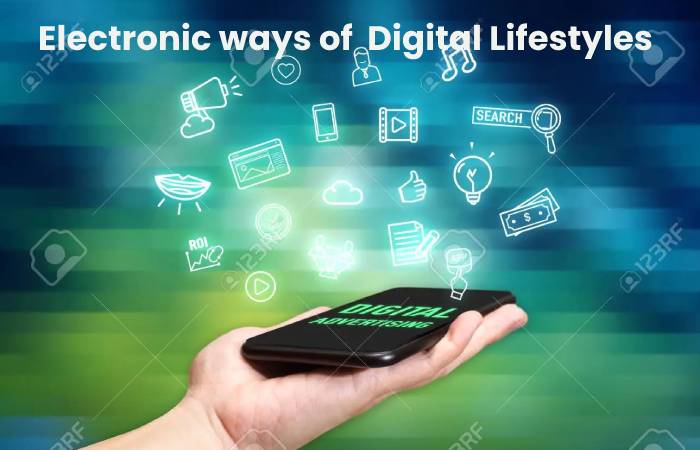
The computerized world presents numerous likely outcomes and advantages to people and the system of government. Digital Lifestyles It empowers individuals to associate more with their friends and family and assemble new fellowships everywhere. It empowers organizations to connect more to clients through computerized promotion. A computerized way of life is simply one more type of autonomy, giving individuals greater adaptability to make the existence they envision. Digital Lifestyles When utilized shrewdly, there is no question that computerized can improve the nature of lives, both now and later on. Six notable computerized ways of life are recorded underneath:
- Digital Lifestyles Influencers – For the most part, youngsters love the versatile web, enthusiastic about virtual entertainment, blog routinely, have a noisy voice on the web and have huge internet-based customers.
- Networkers – They utilize the web and virtual entertainment, for the most part, to lay out and keep up with connections. Try not to have a boisterous internet-based voice, truly.
- Communicators – They love communicating with individuals, whether up close and personal, on cell phones, virtual entertainment, on the web or by email.
- Aspirers – Searching for valuable chances to grow their web-based presence, they generally access the web from home anyway need to be more dynamic on their cell phones.
- Knowledge searchers – Digital Lifestyles These are commonplace specialists, who utilize the web to acquire information, and data and to instruct themselves. They don’t have a lot of interest on person to personal communication however prefer to interface with similar individuals.
- Functionals -Digital Lifestyles As the name recommends, the web resembles a useful device. They are not exactly the person-to-person communication disapproved yet prefer to stay in contact with the most recent news, sports, and climate and do web-based shopping.
Digital Lifestyles Associated home
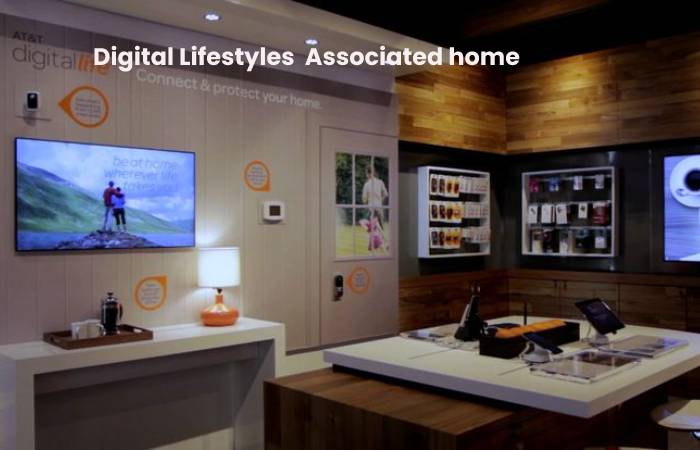
Digital Lifestyles we know, the web is a worldwide PC organization comprising interconnected networks utilizing normalized correspondence conventions. It empowers advanced or innovative gadgets to associate with one another, and administrations and applications make it more straightforward for the substance (data, video, music and so on) to be shared from anywhere in your home. This idea is many times depicted as associated with home. Digital Lifestyles To give some examples models, the associated home contains the accompanying administrations:
- Home security (for instance, the Cover merchant offers security gadgets)
- Home computerization (Mac HomeKit, Samsung SmartThings, Amazon Reverberation (Alexa) and Google Home Right hand)
- Energy the board items and administrations (RWE AG Shrewd home)
- Media diversion (Webee insightful associated home arrangement), and
- Wellbeing and wellness (Empatica and Beat items).
On the off chance that your element is put away in the cloud administration (YouTube is a genuine model), it may be shared anywhere where there is a web association. These administrations and applications are conveyed over various interlinked and coordinated gadgets, sensors, apparatuses and stages. This idea is commonly known as the Web of Things (IoT). Digital Lifestyles The correspondence is empowered by Broadband, Wi-Fi, 3G or 4G organization. Some would think about how this is all conceivable. Indeed, this is upheld by advanced innovations, for instance, savvy learning calculations and prescient examination, to convey wise home encounters.
Versatile working
It sounds unrealistic. The computerized way of life empowers individuals to work anywhere there’s web availability, for instance, home, office, lodging, restaurant, etc. Digital Lifestyles You can work for an organization in London, New York while living in South Africa. Advanced advancements have achieved major developments in the work environment, for instance, video-conferencing, Voice over IP, VPN and so on.
It permits workers to go to online gatherings. Numerous businesses are beginning to offer work-at-home open doors for their representatives. It happens more in created nations than in non-industrial nations. It saves businesses office space, helps efficiency and draws them a stage nearer to effective computerized change. Versatile working can empower groups to adjust their work-life plan in light of their singular requirements. Digital Lifestyles It will require a great deal of trust and discipline between the representative and the business. The potential outcomes of how you can manage a computerized way of life are practically eternal. Will advanced upset the working environment culture? Remain tuned for more!
Adopting a digital lifestyle makes it easier to stay home
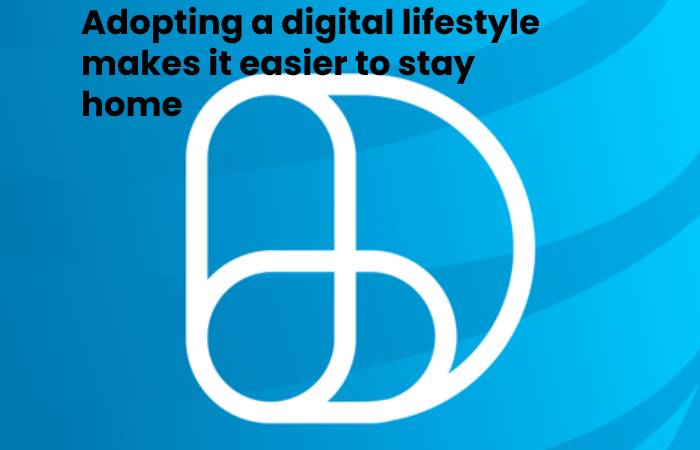
Huddled at home, working, studying, and most likely multitasking, consumers, have become greedy tech and media hunters for the past few months, seeking information, entertainment and solace online like never before. That was the headline finding of a July 2020 PwC survey of 1,000 US consumers ages 18 to 64 who have access to the internet.
We surveyed to identify changes in digital lifestyles in the wake of the pandemic. We also survey consumers about their current technology-related habits, purchasing behaviour, and future intent to consume and purchase technology products and services.
Technology use is experiencing a surge amid a pandemic
Consumers are using their technology devices much more than before the pandemic, with young consumers aged 18 to 24 leading the way. Digital Lifestyles Almost half of our respondents (47%) use their smartphones more, while 44% use their TV more. By avoiding crowds and observing physical distancing, 18-24 year olds see staying at home as the safest option, perhaps the only one, for now.
Smartphones have staying power
In six months, consumers expect to be able to use their tech devices less once social distancing restrictions are lifted. However, given the recent spikes in infections, use of the device could continue in the medium term. Well over half of the consumers surveyed indicate that they can continue to use smartphones extensively, while the use of other devices is likely to decrease.
Technology spending remains stable
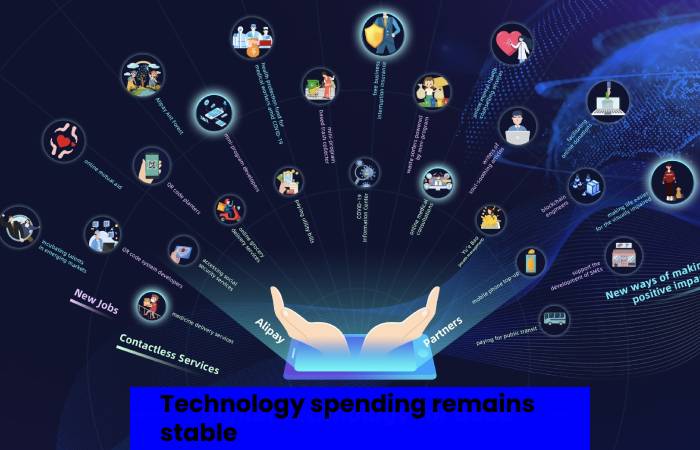
The vast majority of respondents, 78%, use more online services. Spending levels reflect this trend, with 74% of consumers spending as much or more on technology as they did before the pandemic, despite economic concerns. Digital Lifestyles
It’s important to stay connected
Nearly 33 million Americans received unemployment benefits in June 2020, about five times the peak during the Great Recession. However, while loss of income may result in the cancellation of certain monthly subscriptions, more than two-thirds of consumers say they would not cancel their internet or mobile service. These subscriptions are particularly difficult for consumers age 50 to 64.
Latino consumers rate higher on certain devices
Since the pandemic’s beginning, Latino consumers still use certain technology devices more than the average consumer, particularly TVs, digital streaming devices and tablets. More Latino consumers surveyed report working full-time than consumers overall (56% vs 49%), and 48% have one or more children under 18 currently living in the household.
Digital Lifestyles consumers for the long term
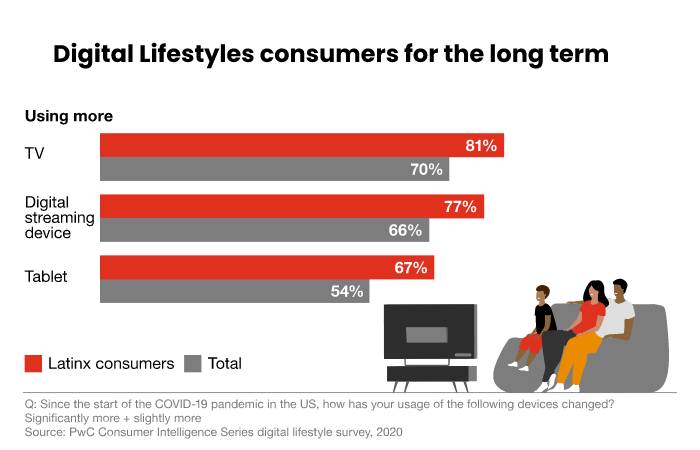
Digital Lifestyles Consumers have continued to engage with their digital lifestyle when physical choices are limit, and they are ready for new technological possibilities. Nearly two-thirds of respondents describe themselves as early adopters of technology, and 78% have increased their use of online services since the pandemic began.
74% of respondents now say they spend as much or more on Digital Lifestyles , entertainment, and health and lifestyle amenities as they did before the pandemic. Digital Lifestyles Although more than 70% say they have insufficient bandwidth and internet speed at home, it is. Consumers aren’t particularly concerned about digital security either; Most already have basic security.
Many of these digital lifestyle habits will likely remain in place long term. Consumers expect to spend as much or more on technology once the pandemic subsides. 65% said they would buy a new tech device in six months.
Technology products and services are now integral to consumers’ digital lifestyles. They are willing to continue spending on technology, opening up many opportunities for technology, media and telecom companies.
The hunger for digitally secure online options ranges from content such as gaming and entertainment to technology-enabled fitness products. Likewise
Implications For Customer Strategy:
- Digital Lifestyles Trends that existed before the pandemic are accelerating at a previously unthinkable rate. To stay in the minds of consumers despite their financial woes, find ways to continually delight them with innovative new content and device bundles that resonate. Think beyond the pandemic.
- Invest in the necessary computing and storage infrastructure to support this increased consumption, especially since elements of remote work are likely to persist well beyond recovery.
- Analyze customer data to identify preferences and behaviours by segment and category. For example, smart home security cameras and virtual reality (VR) headsets are more popular among millennials. Keep these preferences in mind as you develop plans to adapt to the reality of a global pandemic and a post-pandemic world.
- While younger consumers are often at the forefront of technology adoption, don’t neglect older consumers, who are often more loyal in the long run and often have more disposable income. Both cell phone service (79% vs 68%) and internet service (78% vs 63%) are much more consistent among older consumers than among all consumers surveyed.
- Instead, keep targeting young consumers, including those currently out of the office, as they will soon be in their prime earning years. Digital Lifestyles Growing up around technology, their propensity to use it in all aspects of their lives makes them very attractive customers.

